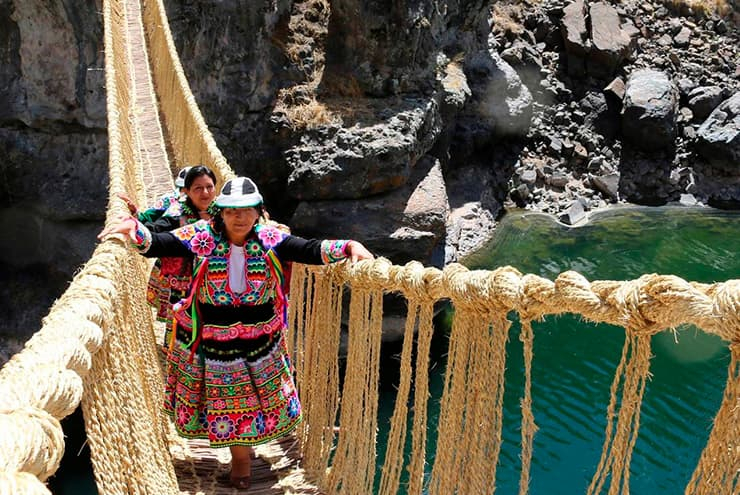They Invented The Rope Suspension Bridge Without Outside Assistance
The Incas employed a variety of methods to cross rivers, the most famous of which are their rope bridges. The rope suspension bridge was invented by the Incas without the help of other influences. Suspension bridges, on the other hand, have long been used in Asia's hilly regions.
Natural fibers were woven into threads, which were then braided into even larger ropes to create Inca rope bridges. The rope bridges were ideal for foot transportation because there were no wheeled vehicles. Local villages dismantled and rebuilt the bridges on an annual basis to maintain their strength and durability. Q'iswa Chaka, or Q'eswachaka, spans the Apurimac River at Huinchiri in Peru's Quehue District, and is the sole preserved Inca rope bridge. The region's residents renew the bridge every year to keep their traditions alive. According to tests, Q'eshwachaka can support 16,000 pounds, with the strongest Inca rope bridges capable of supporting 200,000 pounds. At least 150 feet long, the longest Inca rope bridges were longer than any bridge in Europe at the time.
The Inca Empire, like many other civilizations in the region, was not as fortunate as civilizations in Mesopotamia or the Mediterranean when it comes to learning from other civilizations. Some of the bridges had lengths of up to 100 feet, according to reports. The longest rope bridge was around 145 feet long. The Incas may have had the world's longest bridge at the time with that length.










